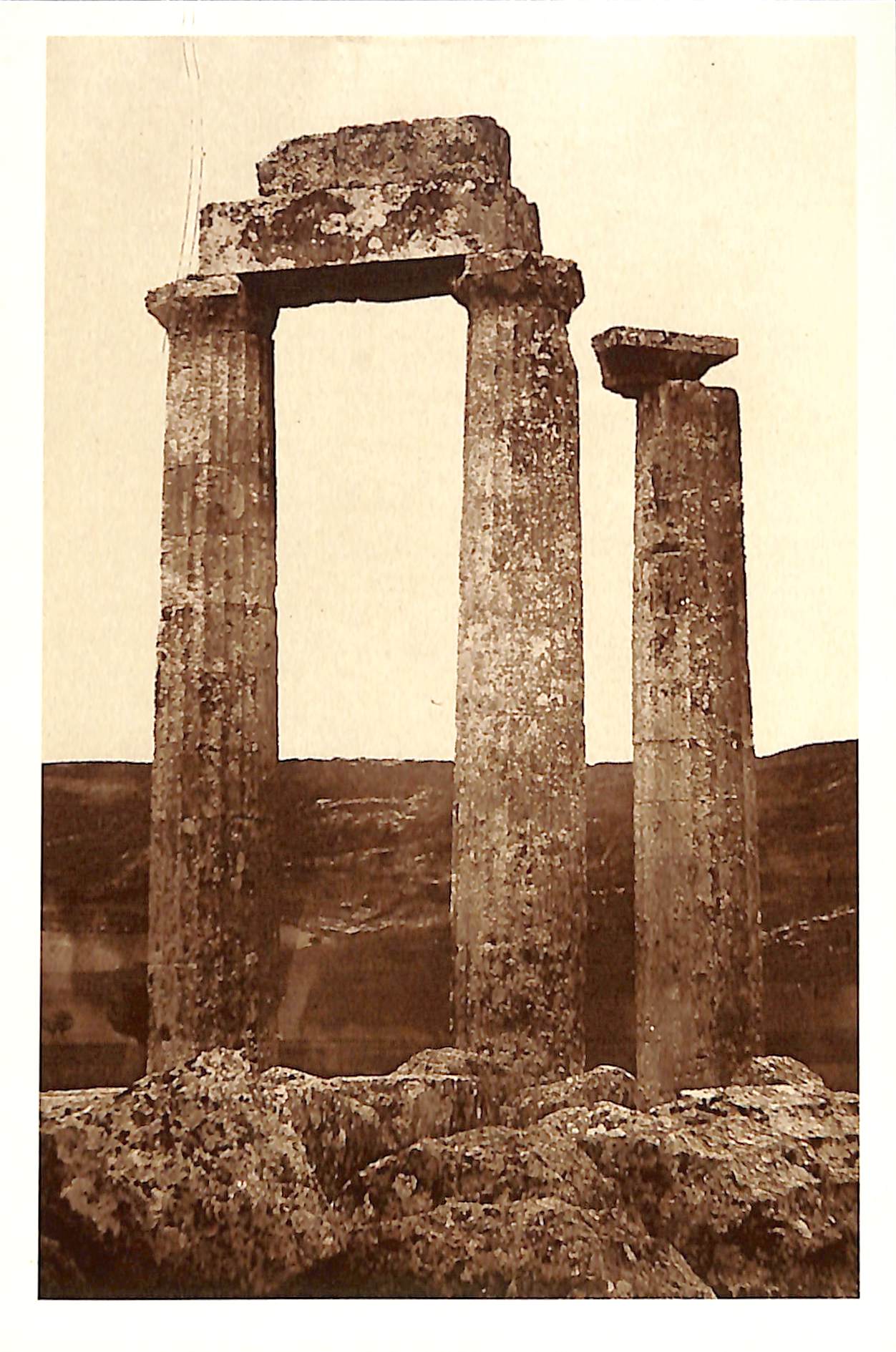
4/29/2025 10:00:48 AM
The temple of Nemios Zeus in Ancient Nemea
The first excavations at ancient Nemea in Corinth took place in 1766 by members of the "Dilettanti" (Society of Dilettanti), while significant discoveries were made by the archaeological mission of the American School of Classical Studies between 1924 and 1926, which investigated the sanctuary of Zeus and the Tsoukiza hill. Further excavations were also carried out by the University of California, Berkeley. Excavations continue today, combined with conservation and restoration work. The first temple of Nemean Zeus was constructed around the 6th century BC with the beginning of the Nemean Games. The archaic temple had dimensions of 10.10 m in width and 36.30 m in length. It lacked a peristyle but had two columns on its eastern side, where the entrance was located. It had a two-columned façade, in anta style, with a floor made of mortar and a typical Corinthian roofing system with large square tiles. After its destruction in the 4th century BC, it was decided to rebuild it on the foundations of the previous one. Thus, the new temple, with a width of 20.09 m and a length of 42.55 m, had a pronaos with two columns in the façade, a cella, and an adyton. It was a peripteral temple with a peristyle of Doric columns, each 7.49 m tall, and the roof consisted of wooden beams with terracotta tiles placed above them. Finally, the door was made of two wooden leaves and had an opening of 4.16 meters. Pictured: The Temple of Zeus in Ancient Nemea in 1890. ©Municipal Photography Museum of Kalamaria ‘Christos Kalemkeris’.

